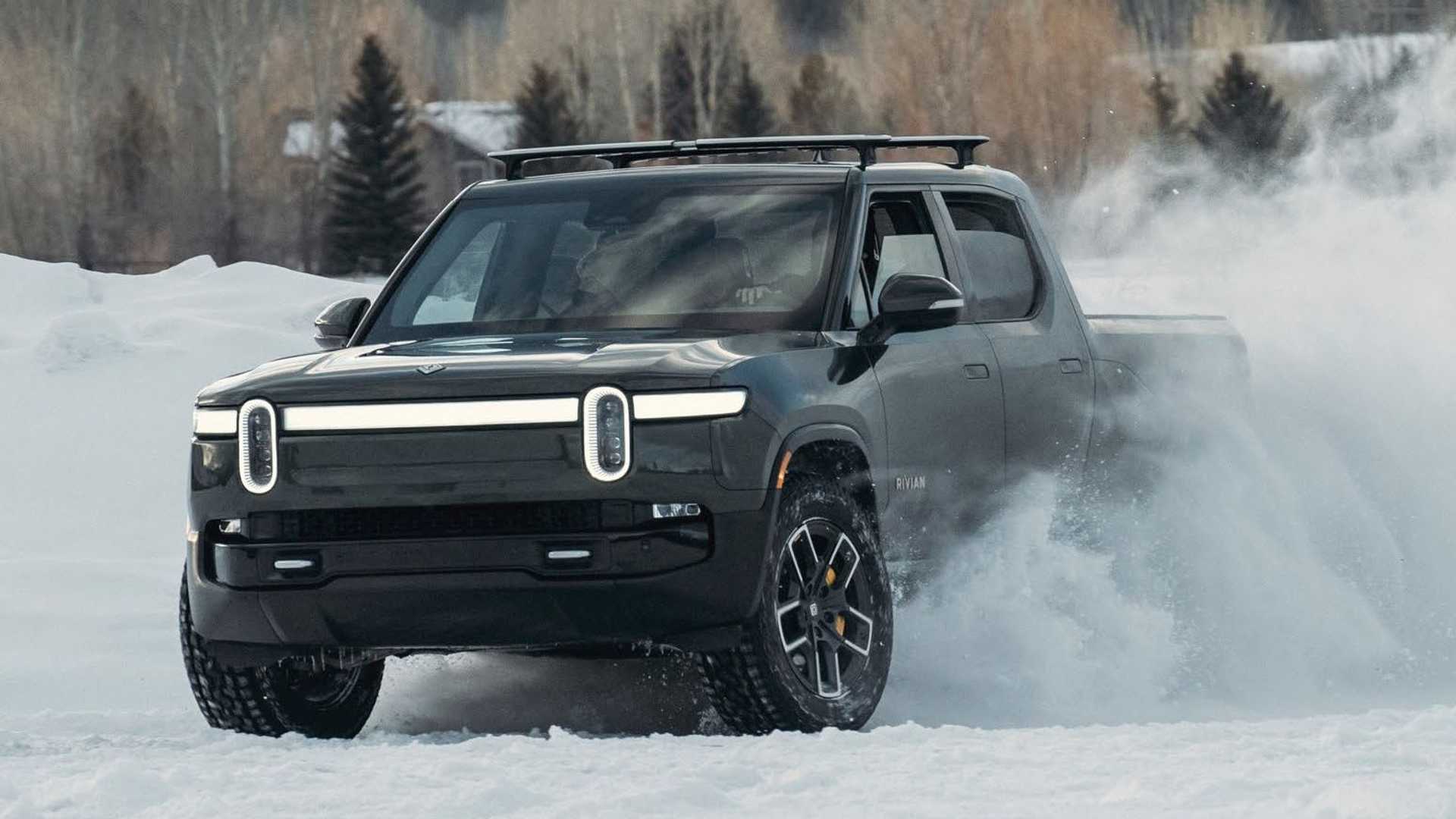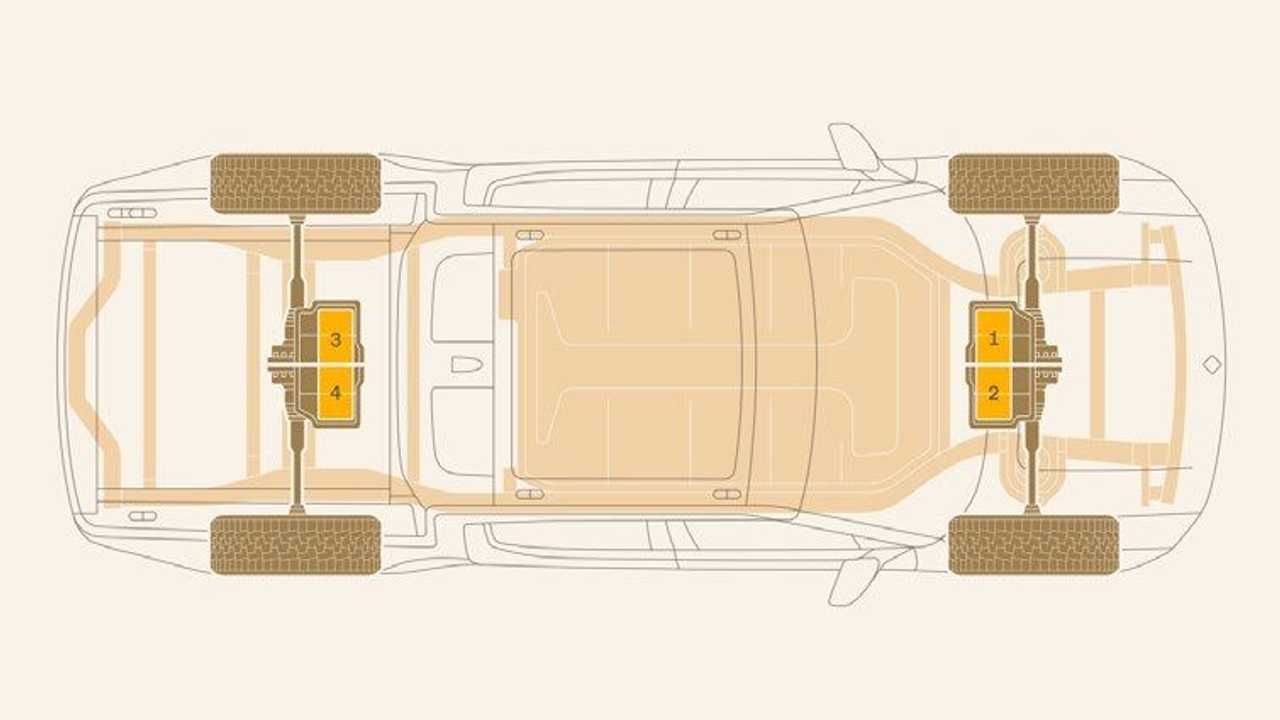
By the way of releasing the financial report for Q4 2021, Rivian announced that it continues "significant investments" in next-generation vehicle platforms and in-vehicle technologies.
The company outlined what is coming next in terms of technical solutions, so let's take a look.
800 V architecture
One of the biggest topics appears to be a proprietary 800-volt architecture (compared to 400 V used currently).
It means that the new battery systems will have a nominal voltage of about 800 V (the value depends on the state of charge and might vary by 100-200 V).
This new architecture will bring:
- a new in-house family of drive units for both Dual and Quad-Motor configurations
- an integrated on-board charger, DC to DC converter, and DC to AC converter, where the power stages of the DC-AC and AC-DC are bi-directional and share semiconductors, magnetics, and the controller.
In other words, Rivian is going all-in in terms of vertical integration.
We already heard about the upcoming new, dual-motor, all-wheel-drive Rivian electric vehicles. They will be offered at a similar price to the existing quad-motor versions because the quad-motor versions became more expensive (for new customers).
The currently used quad-motor system is based on the Bosch-sourced electric motors, although the drive units were engineered and are manufactured by Rivian.


The upcoming Rivian single-motor drive units can be used for two-wheel-drive applications, as well as for all-wheel-drive applications (dual-motor with one motor per axle).
Rivian announced that as of March 8, 2022, it has built over 100 pre-production units of the new drive units.
The company expects that series production of the new single-motor drive units will begin later this year and, at first, will be used in the Rivian EDV vans by the end of 2022.
"As of March 8, 2022, we have built over 100 pre-production units of our new drive units on our pilot manufacturing line and are executing validation testing for both consumer and commercial vehicle applications. The construction of the full production line for this new family of drive units is currently underway."
The plan includes:
-
Rivian EDV (by the end of 2022)
single motor front-wheel drive
dual motor all-wheel drive
[currently uses R1T/R1S's drive units] -
Rivian R1T/R1S
dual motor all-wheel drive in the second half of 2023
[currently only quad-motor all-wheel drive]
LFP batteries in Standard pack
A very interesting thing is that the upcoming new Standard battery pack will utilize LFP battery cells (compared to high-nickel chemistry used currently in the Large battery pack).
Rivian announced that at first, the new solution will be used in the EDV vans:
-
Rivian EDV
Standard battery pack: 2022 -
Rivian R1T/R1S
Standard battery pack (range of over 260 miles): 2024
[currently only Large battery pack - about 135 kWh and range of 314/316 miles EPA]
the R1T will additionally get a Max pack (in 2023) for more than 400 miles of range
"In addition to our Dual-Motor, we announced the Standard battery pack, which we plan to utilize in the RCV platform beginning in 2022 and R1 platform in 2024. We developed this new pack architecture to utilize LFP cells. Expanding our cell and pack technology roadmaps to include both high nickel cells as well as LFP cells will expand our available supply while reducing cost.
We believe our commercial customers will see similar daily range capabilities with LFP chemistry, and this chemistry provides meaningful cost savings for us."
Here is a brief summary of the lineup:

Heat pump
The lack of a heat pump in the Rivian R1T and Rivian R1S was a small disappointment, but according to the latest report, the company is "developing a heat pump-based thermal system for improved cold weather efficiency."
Other topics
Among new solutions, Rivian mentioned a bi-directional home charger and home energy products (which might herald a home battery pack), and a more powerful infotainment processing.
"We also continue to develop our portfolio of charging and energy products to expand beyond the DC chargers for both Rivian Adventure Network and Fleet charging to include our bi-directional home charger and home energy products.
Beyond powertrain and charging systems, we are also developing an improved network architecture and simplified electronics topology, more powerful infotainment processing, expanded autonomy perception sensors, and our next-generation autonomy compute platform."
Overall, it seems that Rivian has its hands full of work and is expanding in all directions.







